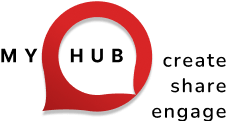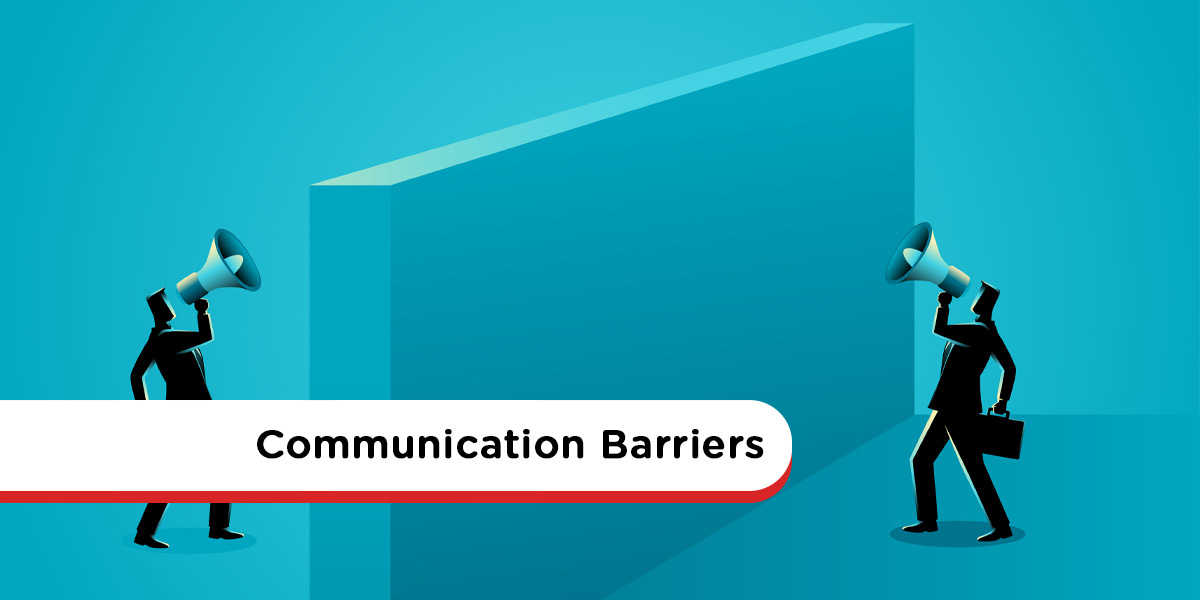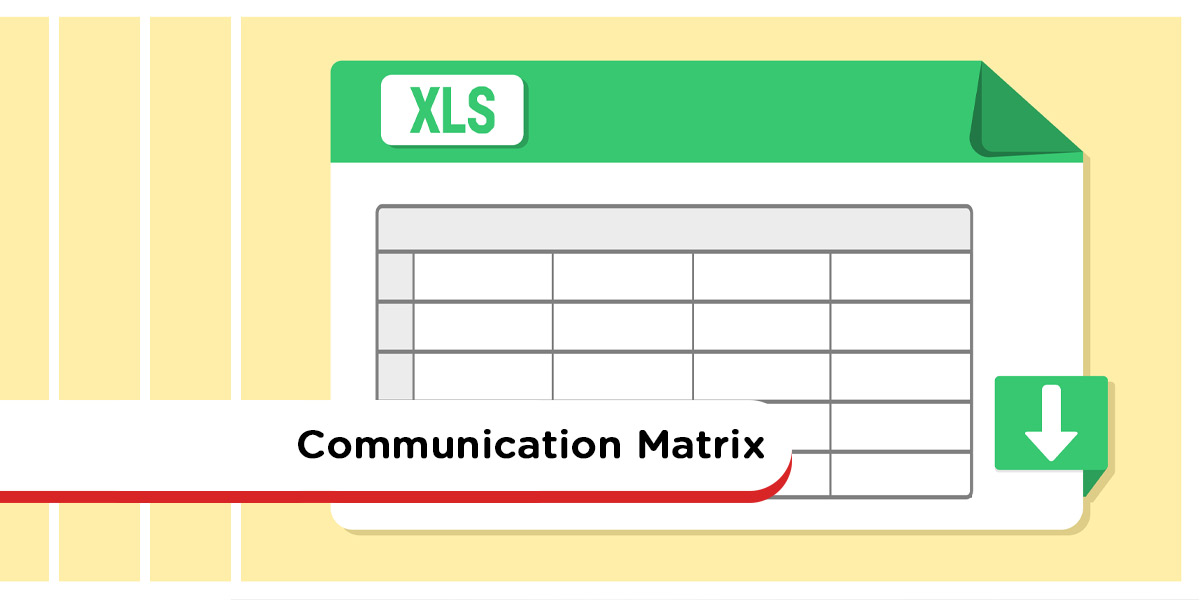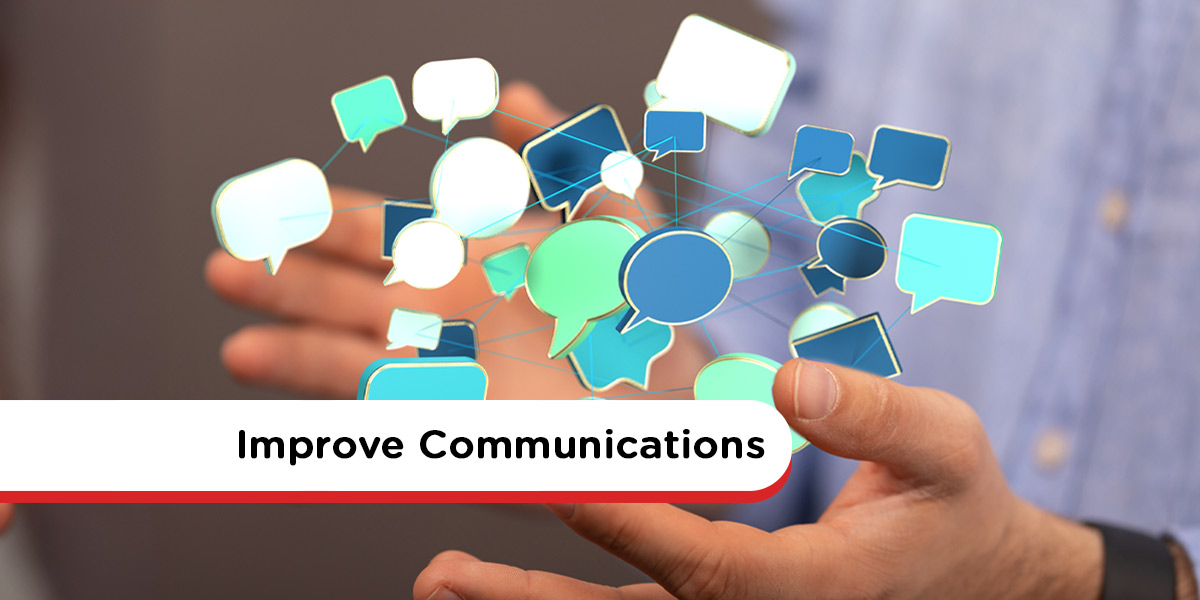
Your New Intranet Starts Here
Streamline communication, boost collaboration, and empower your team with MyHub's intuitive intranet solution.
Book a live demo now and experience the difference.
Take a Quick TourEffective communication is an essential life skill, both personally and professionally. It enables us to share ideas, thoughts, and information in a clear and understandable way. Whether through speaking, writing, or body language, communication allows us to connect, collaborate, and gain new perspectives. Don’t let common communication barriers hold you back, identify and overcome them to improve your ability to communicate with confidence and clarity.
Unfortunately, there are many barriers to effective communication that can hinder understanding. Physical barriers such as noise or distance make it harder to get your message across, while skill-based barriers, like poor listening or unclear expression, can create further confusion. Overcoming these common issues, including language differences and cultural misunderstandings, is key to building strong relationships and achieving success in both work and life.
Effective communication skills are vital in daily life because they help us build trust, solve problems, and reach our goals. Clear communication fosters better relationships and reduces conflict, while miscommunication can lead to frustration, mistakes, and damaged connections.
In the workplace, strong communication is the cornerstone of teamwork and organizational success. It helps teams collaborate effectively toward shared objectives and allows companies to communicate their values, mission, and vision to employees and stakeholders. In contrast, poor communication can lead to inefficiencies, low morale, and missed business opportunities.
Ultimately, communication effectiveness forms the foundation of productive relationships and thriving organizations. When communication flows smoothly, people connect better, share knowledge openly, and work toward common goals with purpose and clarity.
The Communication Process
The communication process is the foundation of how we exchange information. It involves a sender, a message, a medium, a receiver, and feedback. Each element plays a crucial role in ensuring the message is understood as intended. Successful communication depends on clarity, attention, and active participation from all parties involved.
- The Sender: The sender is the person initiating the message. Their role is to craft a clear, concise message that considers the audience, the purpose, and the best delivery method.
- The Message: The message is the information being communicated. It should be accurate, relevant, and structured in a way that resonates with the audience.
- The Medium: The medium is the channel used to transmit the message, whether it’s spoken, written, or visual. Choosing the right medium ensures your message is delivered effectively.
- The Receiver: The receiver is the person or group interpreting the message. They must actively listen or read carefully to understand the sender’s intent.
- Feedback: Feedback completes the process. It allows the receiver to confirm understanding and provides the sender with valuable insight into how the message was received. Without feedback, communication remains one-sided and potentially unclear.
Communication Process Overview
In summary, the communication process involves a sender delivering a clear message through an appropriate medium to a receiver, who provides feedback to confirm understanding. It’s a two-way process that requires focus, engagement, and openness from everyone involved.
Communication Channels
Communication channels refer to the various ways we share information. Each type offers unique advantages and limitations, and choosing the right one depends on context, purpose, and audience.
Verbal Communication
Verbal communication involves using spoken words to exchange information and ideas. It includes speaking, listening, and interpreting tone or intent. This method is powerful for building relationships, resolving conflicts, and driving collaboration. However, misunderstandings can occur, especially when tone, accents, or language barriers interfere with meaning.
Despite these challenges, verbal communication remains the most direct and personal way to connect, making it essential for effective teamwork and leadership.
Nonverbal Communication
Nonverbal communication uses body language, gestures, posture, and facial expressions to reinforce or complement verbal messages. It’s a powerful tool for expressing emotions, but it can be tricky, different cultures interpret nonverbal cues differently.
For example, a smile may represent friendliness in one culture but sarcasm in another. Being mindful of cultural differences and aligning your body language with your words ensures your message is consistent and authentic.
Written Communication
Written communication involves conveying information through text, such as emails, reports, or social media posts. It’s ideal for documenting complex details, ensuring accuracy, and providing a permanent record of information. However, written communication can be slower and open to misinterpretation if phrasing lacks clarity or tone.
Communication Channels Conclusion
In conclusion, there are many ways to communicate, from spoken and written words to gestures and visual cues. Each communication channel has its own strengths and limitations. Choosing the right channel for your message, audience, and situation ensures that your communication is effective, professional, and impactful.
Communication Barriers
Poor communication is one of the most common obstacles preventing people and teams from effectively sharing ideas and information. It can lead to misunderstandings, conflict, and weakened relationships. To overcome these challenges, individuals and organizations must focus on improving communication skills and proactively addressing internal issues before they escalate.
Often, poor management contributes to communication breakdowns. Leaders must set the tone by fostering transparency, active listening, and open dialogue across all levels of the organization.
By consciously working on communication skills and recognizing potential barriers, individuals can build stronger relationships, foster collaboration, and create a culture of trust and mutual respect.
Below, we explore the most common communication barriers, including language, cultural, psychological, gender, and physical challenges, and how to overcome them.
Language Barriers
Language barriers occur when differences in language or dialect make it difficult to understand or express ideas clearly. These barriers can lead to confusion, frustration, and misinterpretation of intent.
To overcome language differences, individuals should practice awareness and empathy. This may involve learning key phrases in another language, using translation tools, or relying on visual cues like gestures and facial expressions. For instance, a Spanish speaker might use a translation app to communicate effectively with an English-speaking colleague.
In the workplace, language barriers can hinder collaboration and reduce productivity. To address this, employers can provide language training, translation support, or multilingual communication tools to ensure inclusivity and smoother teamwork.
Cultural Barriers To Effective Communication
Cultural differences significantly influence communication styles, expectations, and interpretations. Every culture has its own norms and values that shape how people express themselves, directly or indirectly. Without cultural awareness, even well-intended messages can be misunderstood.
For example, some cultures prefer a more indirect communication style to maintain harmony, while others value directness and openness. Understanding and respecting these nuances helps foster clearer communication and avoids unintentional offense.
Generational and cultural differences also play a role. For instance, younger employees might prefer digital communication, while older generations may favor in-person conversations. These preferences are shaped by unique life experiences and social influences.
By showing curiosity, respect, and adaptability toward cultural and generational differences, teams can build mutual understanding and reduce cross-cultural miscommunication.
Psychological Communication Barriers
Psychological barriers arise from mental and emotional factors that distort communication. These can include stress, low self-confidence, bias, or personal insecurities, all of which affect how messages are sent and received.
Different communication preferences can also create barriers. Some individuals prefer detailed written communication, while others thrive on face-to-face discussions. When these preferences clash, it can lead to frustration and disengagement.
In the workplace, emotional barriers can reduce employee engagement. Team members who lack confidence or feel unheard are less likely to contribute openly, which stifles innovation and collaboration. Overcoming these barriers often starts with self-awareness, empathy, and, when needed, seeking professional support.
By addressing psychological obstacles and promoting a culture of openness, organizations can ensure that communication remains positive, inclusive, and effective.
Gender Barriers
Gender communication barriers often arise from social norms, expectations, and differing communication styles between men and women. Misunderstandings can occur when these differences aren’t recognized or respected.
For example, men may favor a more direct and assertive communication style, while women might prefer collaborative and empathetic exchanges. When these styles clash, it can lead to tension or misinterpretation of intent.
Some individuals may also feel less comfortable communicating with members of the opposite gender due to workplace culture or personal bias. Overcoming this requires awareness, sensitivity, and an inclusive environment that values diverse communication styles.
By acknowledging and respecting these differences, organizations can create a more balanced, open dialogue where every voice is heard and valued.
Physical Communication Barriers
Physical barriers are tangible obstacles that hinder communication, such as noise, distance, poor technology, or disabilities. These barriers can disrupt message delivery and create unnecessary confusion.
For example, excessive background noise can make it hard to hear during meetings, while physical distance or remote work setups may reduce opportunities for face-to-face communication. Similarly, outdated or incompatible technology can prevent clear interaction between teams.
Physical disabilities, such as hearing or speech impairments, can also create challenges that require thoughtful accommodations, including assistive devices or alternative communication channels.
To overcome physical barriers, organizations should invest in modern communication tools, ensure accessibility, and maintain functioning technology. Encouraging regular check-ins, whether virtual or in person, helps keep everyone connected and informed. Addressing these physical limitations builds a stronger, more collaborative communication culture.
Communication Skills
Are you tired of misunderstandings and conflicts in your communication? It could be that your communication skills are holding you back. Don’t worry— with a little practice and some key strategies, you can improve your ability to effectively convey your thoughts and ideas and foster better relationships at work and beyond.
One crucial aspect of effective communication is active listening. This means paying full attention to what the other person is saying and trying to understand their perspective. It’s not just about hearing the words, but also taking in nonverbal cues and emotions. Active listening requires patience and an open mind so you can fully grasp the other person’s point of view and respond appropriately.
Empathy is another vital communication skill. It’s about being able to see things from someone else’s perspective and understand their feelings. Empathy allows us to build deeper connections, defuse tension, and respond with compassion, a crucial skill in leadership and teamwork.
Different nonverbal communication clues, such as body language, gestures, and facial expressions, play a significant role in how we communicate. Being aware of our own nonverbal cues and reading those of others can help us better understand the true meaning behind a message. Effective communicators know how to align verbal and nonverbal signals for maximum clarity.
Clarification and questioning are also key to effective dialogue. If you’re not clear on what someone is saying, don’t hesitate to ask follow-up questions. And when you’re delivering your own message, be clear, concise, and specific to avoid misunderstandings or misinterpretations.
Don’t let cross-cultural differences, interpersonal challenges, or personality conflicts hold you back from meaningful communication. By refining essential skills like active listening, empathy, body language awareness, and clarification, you can confidently overcome communication barriers and connect more effectively with colleagues, clients, and peers.
Conclusion
In conclusion, effective communication is all about exchanging ideas, thoughts, and information clearly and respectfully. Overcoming common barriers such as language differences and cultural misunderstandings ensures that conversations remain productive and relationships strong. Strong communication is the cornerstone of success in both personal and professional settings.
The communication process is a dynamic exchange between the sender, who conveys a clear and concise message through the right medium, and the receiver, who provides feedback to confirm understanding. Recognizing this flow helps improve clarity and mutual respect in every interaction.
Communication channels, such as verbal, written, and nonverbal, are the means through which we share our messages. Being aware of their strengths and limitations ensures that messages are received as intended and not distorted by noise or context.
Core communication skills like active listening, empathy, eye contact, clarification, and questioning empower us to overcome barriers and improve our ability to exchange information effectively. By staying mindful of cultural variations, psychological obstacles, and gender communication differences, we can communicate with inclusivity and respect.
By understanding these barriers and honing the right skills, we can confidently build stronger relationships, foster collaboration, and create a more connected and effective workplace.
FAQ Section
What are common barriers to effective communication in the workplace?
Common barriers include physical distractions, language differences, cultural misunderstandings, emotional factors like fear or mistrust, and technological issues.
How can organizations improve communication among diverse teams?
Organizations can improve communication by providing cultural competency training, encouraging open dialogue, utilizing inclusive language, and leveraging technology that facilitates clear and efficient communication.
What role does feedback play in effective communication?
Feedback is crucial as it ensures the message has been understood correctly. It allows for clarification, reinforces understanding, and fosters an environment of continuous improvement.




